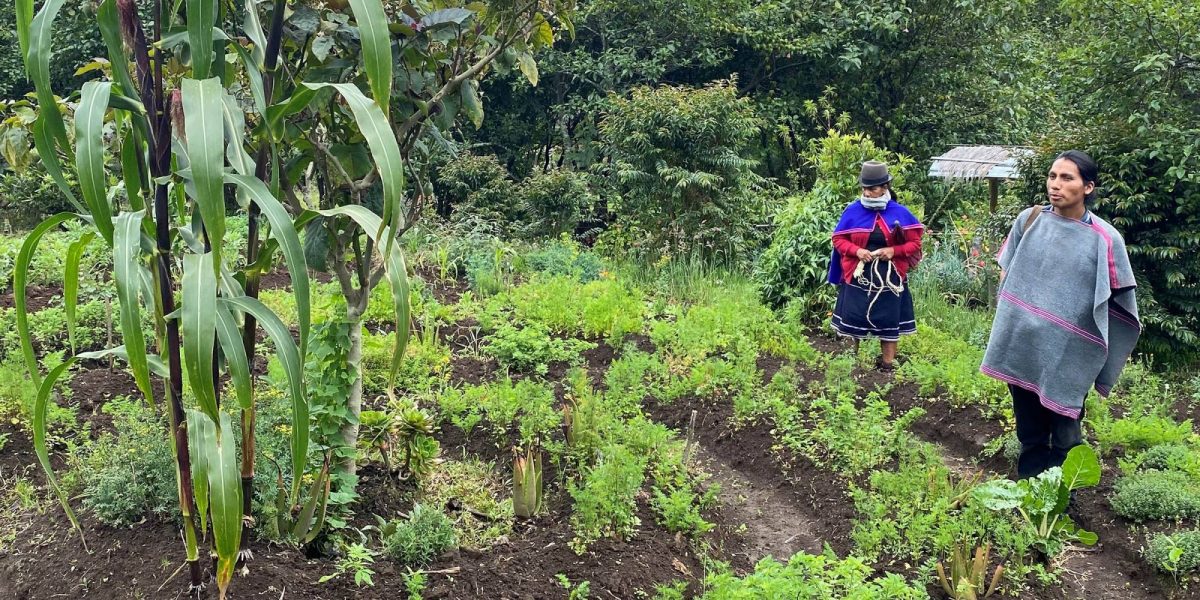Rapport: Å leve med matusikkerhet – erfaringer fra fattige husholdninger i Cauca, Colombia

I prosjektet SEGURA har norske og colombianske forskere undersøkt matusikkerhet i en sårbar befolkning i Cauca-området sørvest i Colombia. Sammen med sine colombianske samarbeidspartnere har SIFO-forsker Arne Dulsrud publisert en rapport med tittelen: «Living in food insecurity – the experience of poor households of Cauca, Colombia».
Matusikkerhet vil si at det ikke finnes nok mat, eller at folk av ulike årsaker ikke har tilgang på maten som finnes. I rapporten fant de ut at 66% av utvalget var matusikre. De viktigste driverne for matusikkerhet var å bo i urbane områder, lavt utdanningsnivå, lav inntekt til lederen av husholdningen, uformell eller midlertidig ansettelse og mangelfulle kjøkkenfasiliteter.
I en tidligere nyhetssak har prosjektleder Arne Dulsrud uttalt at konflikt er den viktigste forklaringen på matusikkerhet og sult globalt sett. Skjevfordeling av eierskap til land og jordbruksområder er en stor utfordring i Colombia.
Hvis du skal starte et sted med å være en bevisst forbruker, så bør du starte med ditt eget rusmisbruk av illegale midler. Fordi det har så eksepsjonelt negative og voldelige konsekvenser at det ikke kan sammenlignes med noe annet.
Arne Dulsrud, prosjektleder SEGURA og forsker ved SIFO
Klikk her for å lese hele saken om hvordan narkoproduksjonen tar maten fra folk i Colombia.
Abstract
Background: Food insecurity refers to a lack of access to guarantee enough food in terms of quantity, quality, use and stability. There are different causes of food insecurity, and the household food insecurity is one of the main causes of malnutrition in vulnerable populations.
Object: To study food security in households in terms of food availability and food access in four municipalities in the department of Cauca, Colombia.
Methodology: A multicenter cross-sectional study was conducted in four municipalities in Cauca, Colombia, to explore food security in post-conflict rural and urban municipalities using three indicators: Food Consumption Score (FCS), Household Dietary Diversity (HDDS) and The Food Insecurity Experience Scale (FIES).
Results: 69.4% of the selected households were classified as monetary poor. The number of mealtimes on the day before the survey was 2.9 and 22.5% of the households had mealtimes less than three mealtimes/day. Variety of food groups consumed in the meals was poor with no more than three. Food insecurity was experienced by overall 65.7% of the households, which became worse because of Covid-19. The main drivers of food insecurity (FIES) were living in urban zones, low education level of the head of the household, low income, informal or nonpermanent employment and poor kitchen facilities. On the other hand, the main drivers for having a higher number of daily meals were income- related variables (like persons receiving income or having formal or permanent jobs), receiving subsidies, and characteristics related to the education level of the head of the household. Household food provisions depend mainly on access to markets. 53.9% of the households purchase their food in the public marketplace, 27.4% in the supermarket, while own food production was reported in 11.4% of the households.
Conclusion: Food insecurity is highly prevalent among households in both rural and urban areas in Cauca, Colombia, and is accompanied with limited access to food and poor variety of the diet. The main drivers were living in urban zones, ethnicity, vulnerabilities among household members, and not having permanent income sources and/or subsidies.
